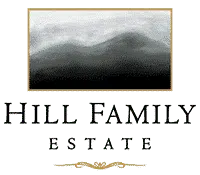In the first part of our exploration of wine aromas we looked at how various complex smells end up in wine, even though they are not found in many wine grapes. Sometimes, however, visitors to our Yountville tasting room take a sip of a wine that we describe as showing “spice” notes and say something to the effect of, “I just don’t get spice, but I get rhubarb.” And, what is it about wines that smell of “forest floor” or show “distinct minerality”? Is there anything objective about these aromas?
Well, the answer is “yes, but it is complicated.”
First, let’s take a look at what the sense of smell is to begin with.
Smell is chemical detection. The molecular structure of certain substances triggers nerve signals that go straight to the brain. It is an extremely short and direct path to the part of the brain that processes smells, so we can react quickly to threats (such as a skunk or the smell of wildfire) or opportunities (such as the smell of a bush full of ripe berries). Neuro researchers surmise that because chemical detection is crucial to survival, the sense of smell is the one closest associated with memory.
In modern times we don’t rely on these strong associations to survive, but the hard wiring persists, making our olfactory memories an important part of the tapestry of our psyches. Marcel Proust’s À la recherche du temps perdu begins with the protagonist eating a madeleine and sipping on lime blossom tea. The combined aroma triggers a cavalcade of memory that starts a seven volume masterpiece of modern literature.
Similarly, when we take a sip of wine the aromas can trigger a complex web of associations and memories. These, of course, are entirely subjective. The fact that a whiff of sour cherry flavor takes me back to a family vacation in October of 1978 in Vermont, even bringing to my mind the otherwise unmemorable rental car we were driving around in is obviously completely unique to me. That the same cherry flavor might inevitably trigger a cross memory of cola in someone else is likewise subjective.
While our experiences with aroma are completely subjective, the presence or lack of specific aromatic compounds is not.
Building a systematic approach to wine aroma and sensory evaluation is a dance between these two poles. We try to find consensus. All through the best wine tasting rooms in Napa Valley, including our Yountville tasting room, we find people sniffing, swirling, sniffing again, sipping, trying to tease out all of these wonderful aromas in the wine, to build a flavor map in their heads of the wines they are tasting. This is not to be taken lightly (although, please, it should not be taken ponderously, either. Wine tasting should be fun, first and foremost!), as our experiences with the wines ultimately will always be our own experience. However, if we are trying to be more systematic with understanding wine aromas, we need some help.
Enter Dr. Ann Noble of the University of California, Davis. She was trying to find a way of developing more precision in describing wine, and she found that the vocabulary that her colleagues were using was vague and not all that helpful in conveying what one was tasting to someone who had not tasted the same wine. “Round” or “harmonious” sound great, but what do they mean? Even today we find terms like “minerality” to be defined quite differently by different tasters and writers.
Between 1984 and 1987 Dr. Noble started the hard work of categorizing and cataloging the aromas found in wine. She had painstakingly organized 80 scents into 11 categories, working with wine industry experts, academics and panels of tasters, into a wheel that is known as the Wine Aroma Wheel. While perception of aroma will always come with a tapestry of memory and associations, the categorization of aromas in the wheel helps us come to a common parlance, allowing us to communicate what we smell to others with a little higher degree of objectivity.
What about the smell of XXXX? I don’t see that on the wheel, but I certainly get that in this Pinot Noir!
There are at least 800 aromatic compounds that can potentially be found in wine. The 80 on the Wine Aroma Wheel are only the most common found in wines. This is by no means an exhaustive or definitive list. In fact, as we work to develop the acuity of our own sense of smell, we are going to find smells that, while not being common, are clearly present. Working on these concepts in sensory science will continue to provide expansions and refinements of Dr. Noble’s pioneering work.
Subsequent research in this field has yielded a sparkling wine aroma wheel, a coffee aroma wheel, a whiskey aroma wheel, a spice wheel, and a perfume wheel. Any industry that relies on complex and pleasing olfactory sensations will benefit from this systematic approach to aroma.
Now we have a To train our noses to identify these aromas regularly. Having the wheel in front of us is a great first step (it can be ordered online fairly cheaply). For those who want to take their experience of fantastic Napa wines to greater depths, reference standards are the next step.
One can purchase a wine aroma kit, like Jean Lenoir’s 54 Aroma Les Nez du Vin kit. While rather pricey, the kit offers convenience and exquisite packaging. For those on a budget, but willing to do some work (and it is fun work, I promise!), aroma standards can be made from items commonly found in the kitchen. The Wine Spectator has instructions for a great starting kit here: https://www.winespectator.com/articles/how-to-make-your-own-wine-aroma-study-kit-42734 As you suspect other aromas in wines, you can isolate sources of those (for instance, if you notice the smell of Artemisia californica in a red wine, you can follow these instructions to make your own reference standard for A californica).
We can take a deep dive into how to use aroma standards, but that would add considerable to the length of this blog entry. The quick summary is to smell the standards on their own (study no more than 10 in a single session), until you can identify them immediately. When you have a wine that exhibits an aroma, you can taste it while alternating sniffs of the reference standard. The reference standard will attenuate that aroma momentarily, allowing you to note other aromas that may have been masked by that target aroma, thus giving you a deeper appreciation of the wine at hand.
Wine aromas are fascinating, complex, and mesmerizing. They are the central point of what makes wine enjoyable, whether with a picnic or at our Yountville vineyards tasting room, at the campsite after a hard day of hiking or on the patio. We have just scratched the surface of the science and art of aromas with these two blog entries. Hopefully they will serve as a springboard for your own exploration into this topic!

